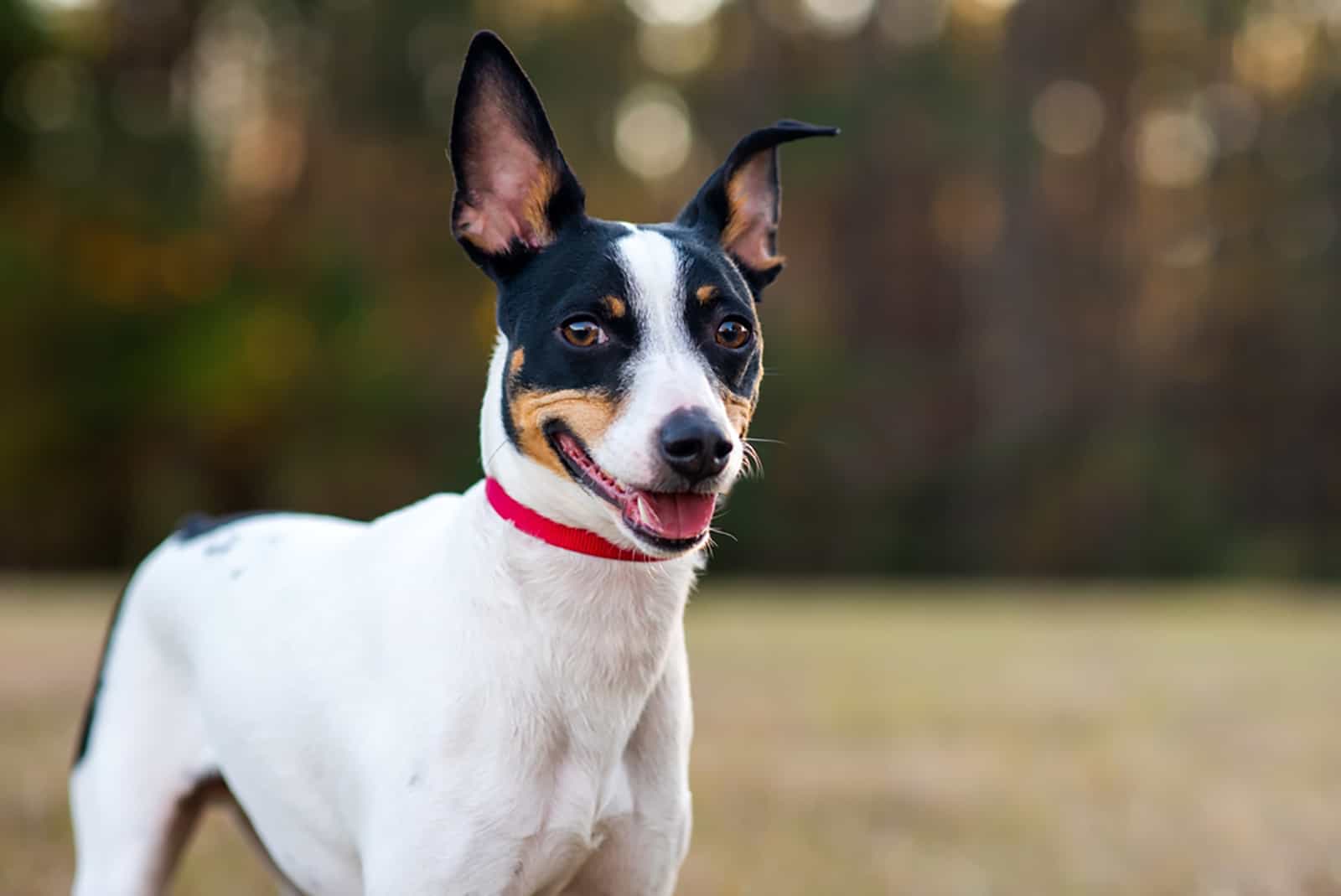Dog breeds used to be what dog colors are now — an expression of the self through your canine companion. The dog breeding business has been booming with people becoming more and more focused on what color their dog comes in.
Rat terrier colors are no different. The breed is considered rare but that is not enough for us humans is it? We prefer rarer yet!
So, naturally, breeders decided to play around with bloodlines and create numerous colors of Rat terriers too.
How Many Rat Terrier Colors Are There?
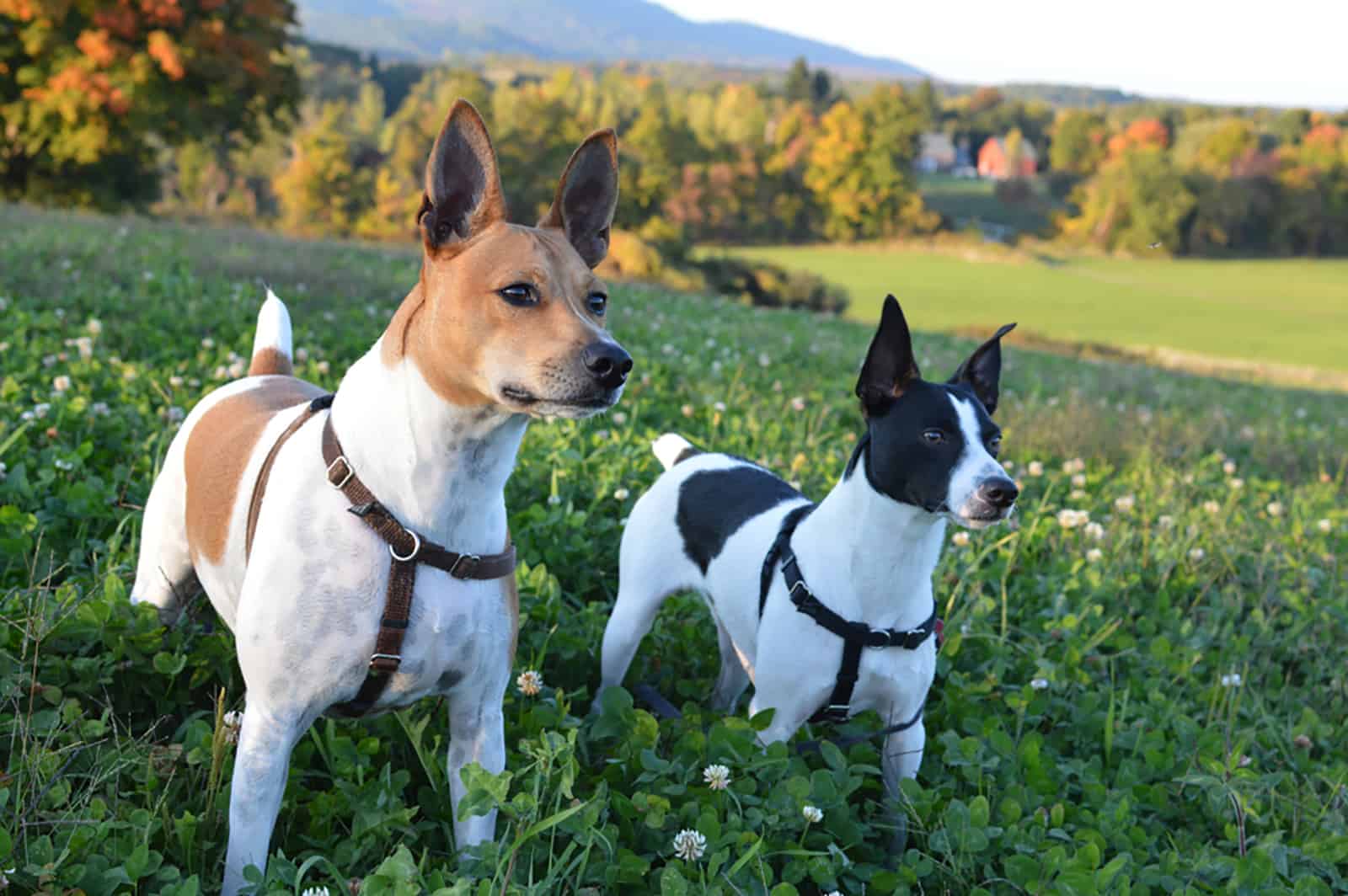
Too many to choose from. Oh, do I miss the simple days when there were only a couple of options to pick from. Well, there are more Rat terrier colors than you would care to remember.
The AKC recognizes up to eighteen color variations and nine markings for the Rat terrier. This narrows down the choices for those of you who plan on getting a show dog Ratter.
For those who are getting a companion or pet dog, there are more colors depending on what the breeder mixed and matched.
1. Apricot Rat Terrier
Apricot and Lemon Rat terrier is a term often used interchangeably. While the shade can be put in the same category, there are a few important differences.
The Rat Terrier Club of America distinguishes between an apricot and lemon Rat terrier color based on more than just general coat coloring.
While apricot has a brown nose carried by the chocolate gene, the lemon Rat terrier has a black nose.
The colors differ slightly but there is another apparent difference related to color development. An apricot Rat terrier will have visible coloring at birth while a lemon Ratter will be all white at birth.
With age, the lemon’s color will start getting more visible but still with a hint of lemon.
The all white is caused by a recessive gene that affects the amount of pigment in the dog’s body, in turn, diluting a solid color or adding a different hue to it.
2. Sable Rat Terrier
For a sable Rat terrier, you need only one parent to have the recessive gene and you get at least one sable Ratter. What is sable? It is similar to a multi-color gradient. Imagine a beagle and you should be on the right path.
A sable Rat terrier’s root of the hair is a lighter shade of its solid color, and the closer you get to the top, the darker it becomes.
In Rat terriers the root can be red or tan with black tips.
This “ombre” looking color pattern can come in many shades but is most famous for the red and tan with black tips and a black nose.
3. Blue Fawn Rat Terrier
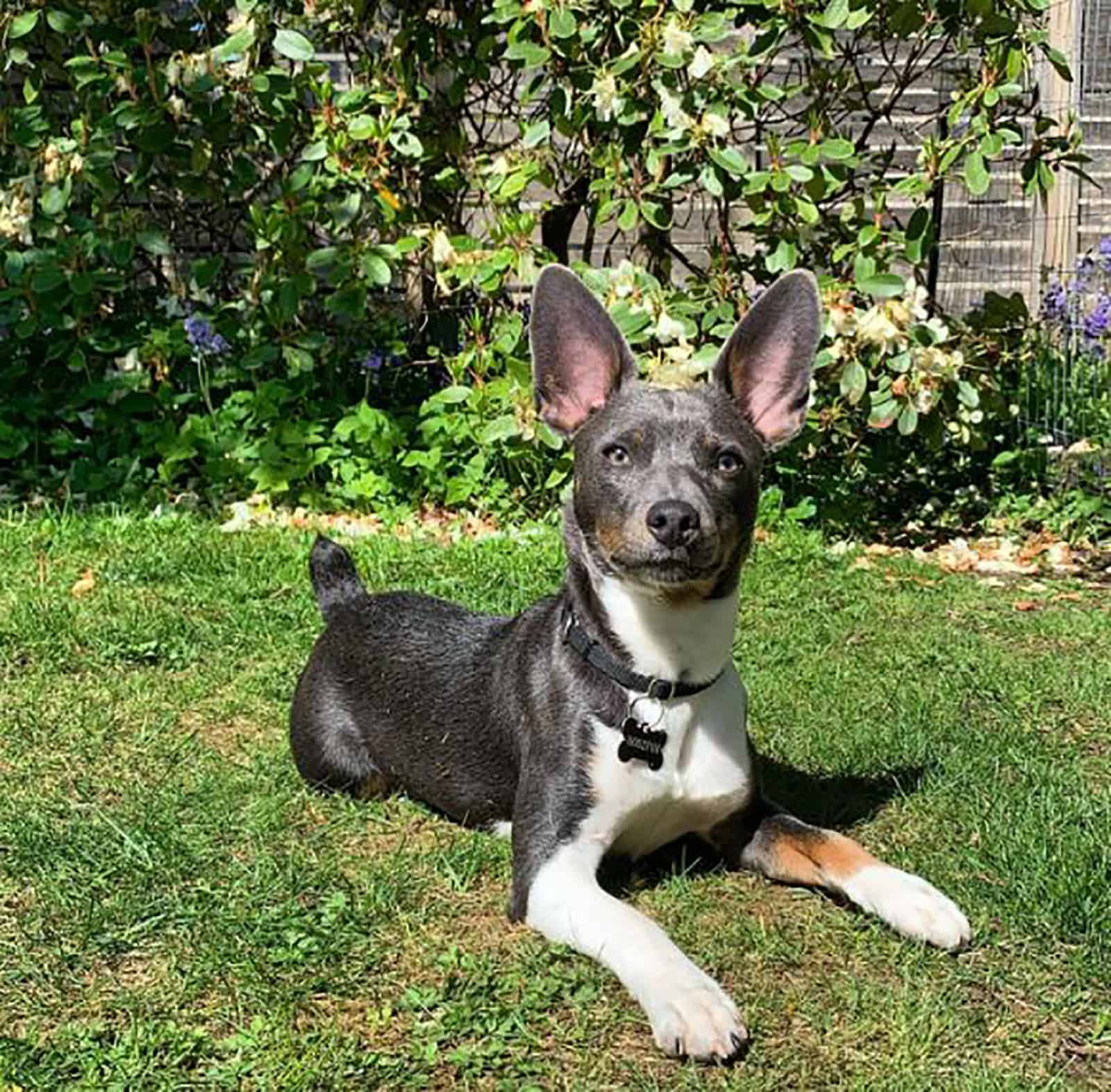
Photo from: @houston_and_ezzie
Most breeds, including the Rat terrier, have a dilute gene color option. Whenever you see blue in the name of the color it is kind of a clickbait.
A dilute gene literally dilutes the dog’s coat’s solid color. In the case of “blue” it is actually a diluted black that ends up looking grayish.
A blue fawn Ratter has a tan body color with “blue” tips. The dilution causes its nose and, oftentimes, eyes to be blue too.
4. Piebald Rat Terrier
This is more of a color pattern than a color itself. Why is it called bald though… Well, there are spots of regular Ratter colors on a predominantly white body. Their eye color varies and can be dark or light.
This shade of white is not a cold bluish white but closer to tan white. Regardless of shade, you might have a laugh seeing some of the patterns.
Ratters are great famous people lookalikes, and you ought to have a good laugh if you recognize someone in your pied Rat terrier.
5. Brindle Rat Terrier
Remember when you used those old cartridge printers that never accurately estimated the amount of color left inside? Well, the streaks you get from the black color leftovers are printed onto a Rattie too.
It is usually a combination of brown or reddish solid color with black streaks all over the body. Some call it the “tiger” pattern. However, this pattern is not common among Ratters. Greyhounds and Great Danes sport this color much more often.
6. Merle Rat Terrier
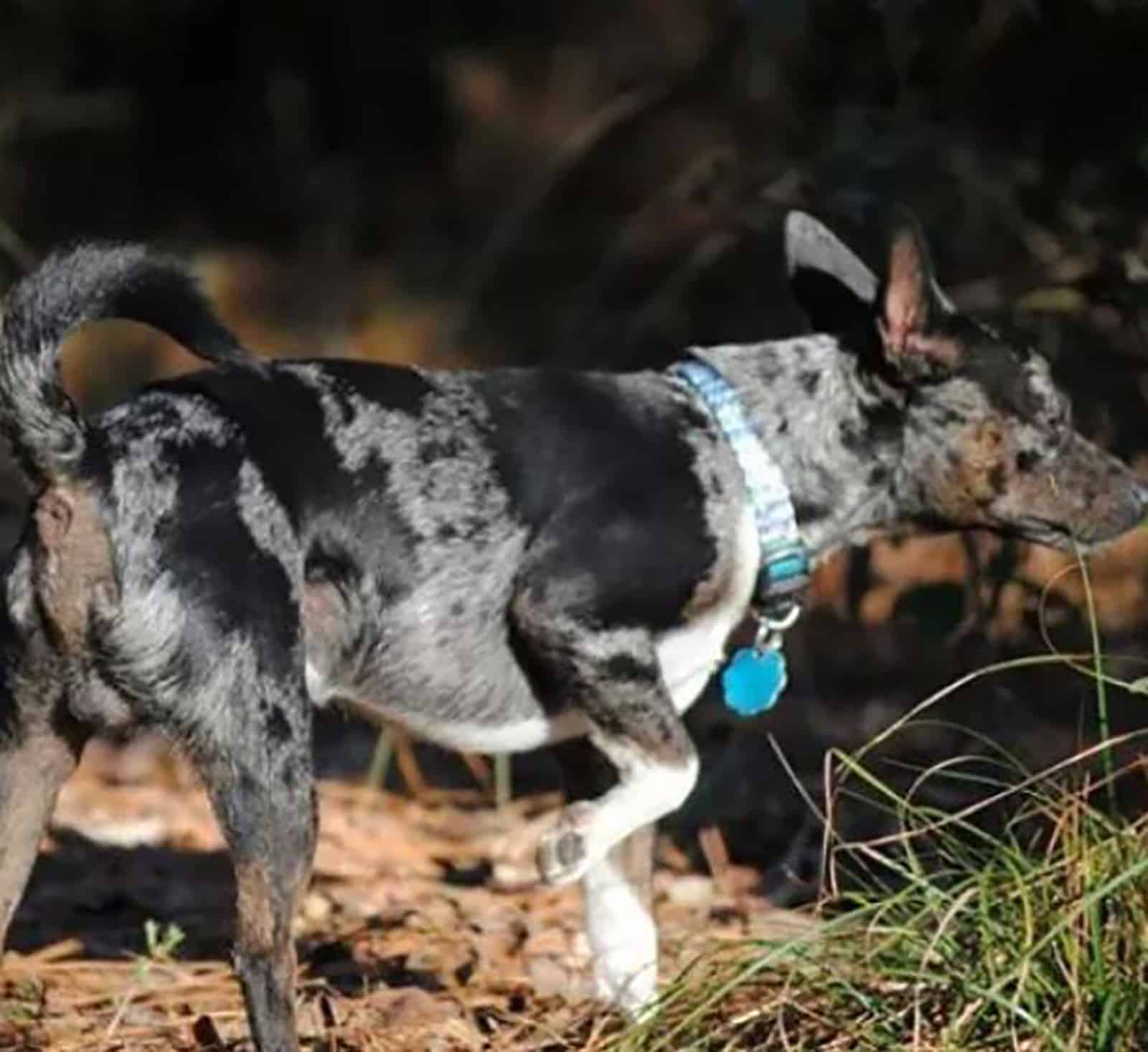
Photo from: @cortcort.cirkels
Hearing that a dog is a merle immediately makes me think of the health problems associated with breeding practices that yield merle colored dogs. Still, the color is very interesting and does not have to be a sign of health issues.
We have several variations of merle in Ratters, so let us go over them quickly.
1. “True” Merle
The true merle is also known as the blue merle due to the recessive gene’s dilution of the black coat into a bluish color that, in fact, is a shade of gray.
The true “blue” merle Ratter has a blue nose to accompany its outfit and is different from the black merle which is also called blue merle. I know, just bear with me for a few minutes.
2. Black Merle
A black merle is actually a blue merle and not a “true” one. So the black merle has a black nose. That is how to differentiate between the two blue merles.
If the recessive gene hit the right spot in the Rattie’s genetic code, their eyes can be colored in a light blue or even have different colors.
This hereditary condition is called heterochromia. Do not worry, heterochromia is not dangerous for your dog. It is simply very special and exclusive to merle dogs.
3. Pearl Merle
This Ratter coat color is a sign that both parents had the dilute gene. This color is the result of diluting a black coat color and mixing it with a liver colored coat.
The two blended merle dogs with different variations of recessive genes produce a pearly color.
Ă pearl merle is especially rare since liver is a hard color to achieve by breeding.
Double merle breeding is also very controversial as studies have shown that combining two parents with recessive genes carries health problems for the next generation.
4. Chocolate Merle
I left this one for dessert as it is the last merle variation. If you ever saw a chocolate lab, you know what kind of brown color I am talking about. A chocolate merle Rattie has puddles of diluted chocolate brown color over a white body.
This can create cool looking patterns on your Rat terrier. There is also a possibility of light brown or blue eyes. The latter is highly unlikely, but the breeding lottery is also highly unpredictable.
7. Blue-White Rat Terrier
Again, the blue is not really blue but a black or gray that reflects light in such a way that it appears bluish to our eyes. From now on I will just call it blue. I promise.
Blue and white Ratters are exactly that – a mainly white coat with almost symmetrical parts in blue. The blue color usually appears on the head, ears, along the dog’s back and tail.
8. Black & White Rat Terrier
Similar to the blue-white, a black & white Ratter will have a white base with full or partially black head. The ears are almost always colored with paws and tail having parts or being entirely tinted.
While not all color combinations mentioned in this article are recognized as breed standard by the AKC, both blue-white and black & white are allowed if you plan on taking your Rat terrier to shows.
You get extra points if your Rat terrier has tan points.
9. Black Tan Rat Terrier
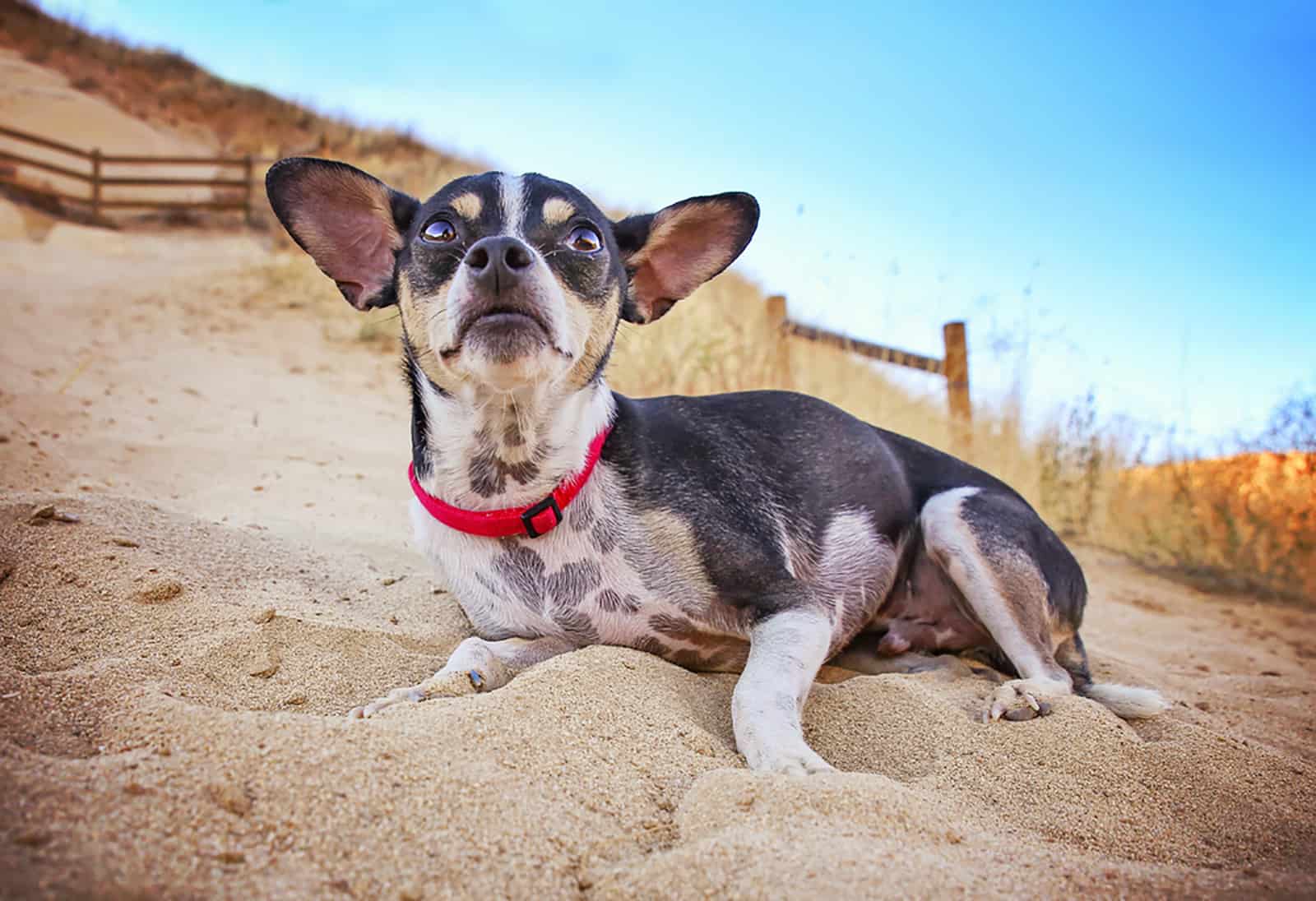
Tan is a common base coat color for Rat terriers and can be found in most combinations. A classic combo of black and tan is how the traditional terriers of yore looked.
A tan main body with splotches of black here and there. The most likely places to find the black color are the ears, tail, paws but it is not uncommon that the head, stomach or back have significant portions in black.
10. Red-White Rat Terrier
Red-white terriers have one of the best color proportions among color combos. The body is mostly white with red patches that create closed partitions on the head, ears, tail or legs.
This particular combination can appear as inverted too — a red body with white patches. Regardless of combination, the base color is always white and the patches are red. The only thing that changes is the amount of red coat.
11. Blanket-Back Rat Terrier
A blanket back pattern is when a dog’s back is covered in a blanket-shaped black color that extends down the hind legs. This look is a signature look in some breeds such as the German shepherd.
The American Kennel Club recognizes blanket-backs as breed standard which is quite unusual considering some other breeds with blanket-back patterns are not. I guess Rat terriers really are a special breed.
12. Bi-Color Rat Terrier
The name says it all: it is a Ratter with only two colors present on its coat. The color combinations are plentiful but one of the colors has to be white. The white spots are what creates the bi-color pattern.
Any color you can imagine on a Rat terrier can be part of the bi-color pattern. The most common are chocolate and tan with white markings or rather splashes.
A bi-color Rattie is also called a tuxedo Rat terrier because of the common color positioning resembling a tuxedo suit.
13. Tri-Color Rat Terrier
Three colors on a dog make even more unique patterns and there are various combinations. The most common tri-color Ratties always have white with patches of any other solid color.
Common palette mixes are white, black and tan or white, tan and brown. Tri-color ratters are very rare and are hard to predict.
If you are on a waiting list for this combination you might want to arm yourself with a lot of patience or change your color preference.
You might hear people referring to tri-color Ratters as calico. That is simply a synonym for three color combination coats and does not represent a breed specific feature.
What Is The Most Popular Color Of Rat Terrier?
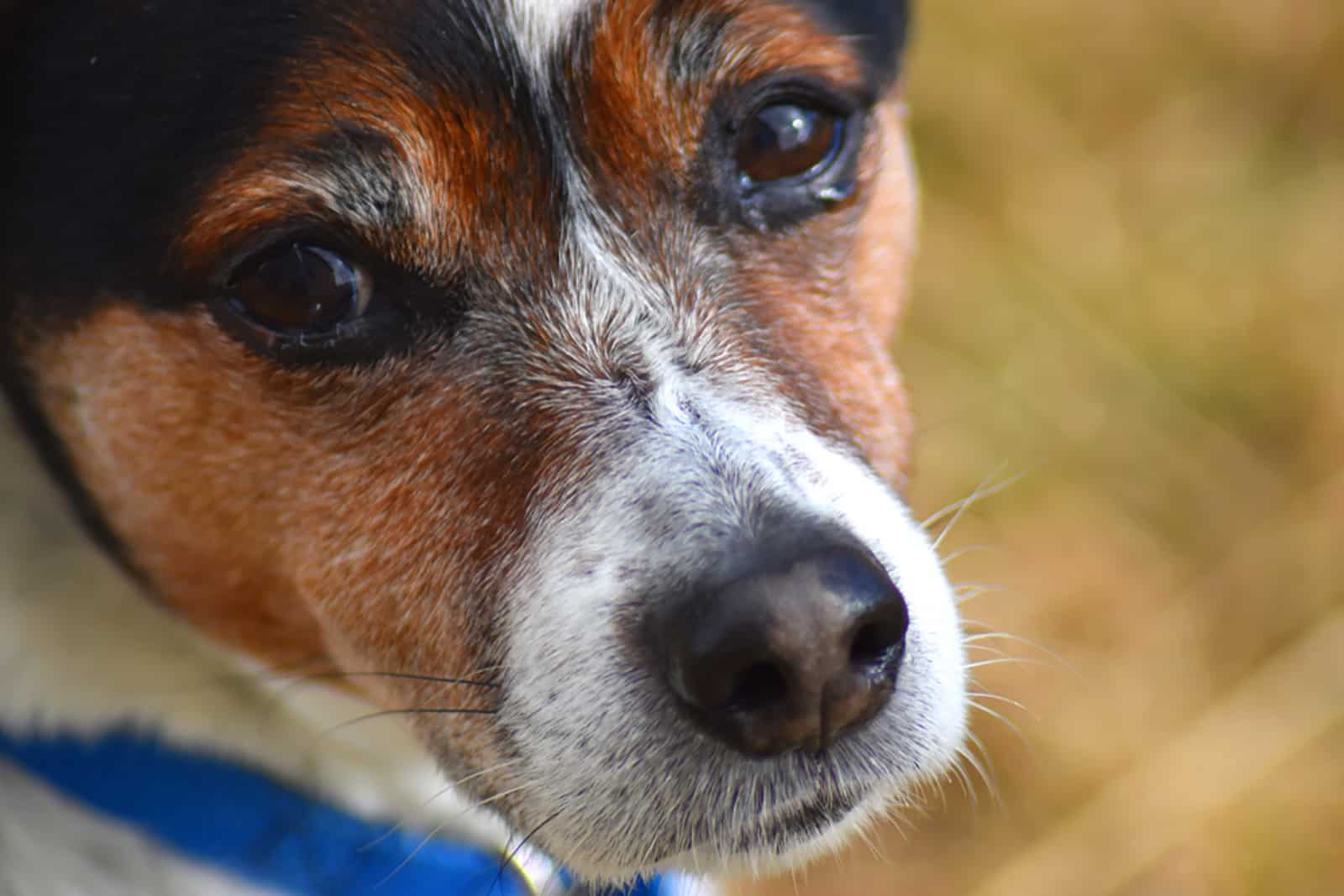
Clearly, the Rat terrier’s coat comes in all the colors you can imagine, but some of them have to be more “established” than others, right? Yes. You are absolutely right. The Rat terrier was originally bred for serious work and not as a fashion friend.
Still, the plethora of options in terms of style means that they had it in them the whole time.
Dogs that belong to the terrier group are usually black, sable or tan, and those colors and patterns were most common before the breed became popular as a companion dog.
Nowadays, in addition to those three, apricot, blue and gray are equally common. With more selective breeding, some color combinations like bi-color and merle became less of a rarity but still hard to get your hands on.
What Two Breeds Make A Rat Terrier?
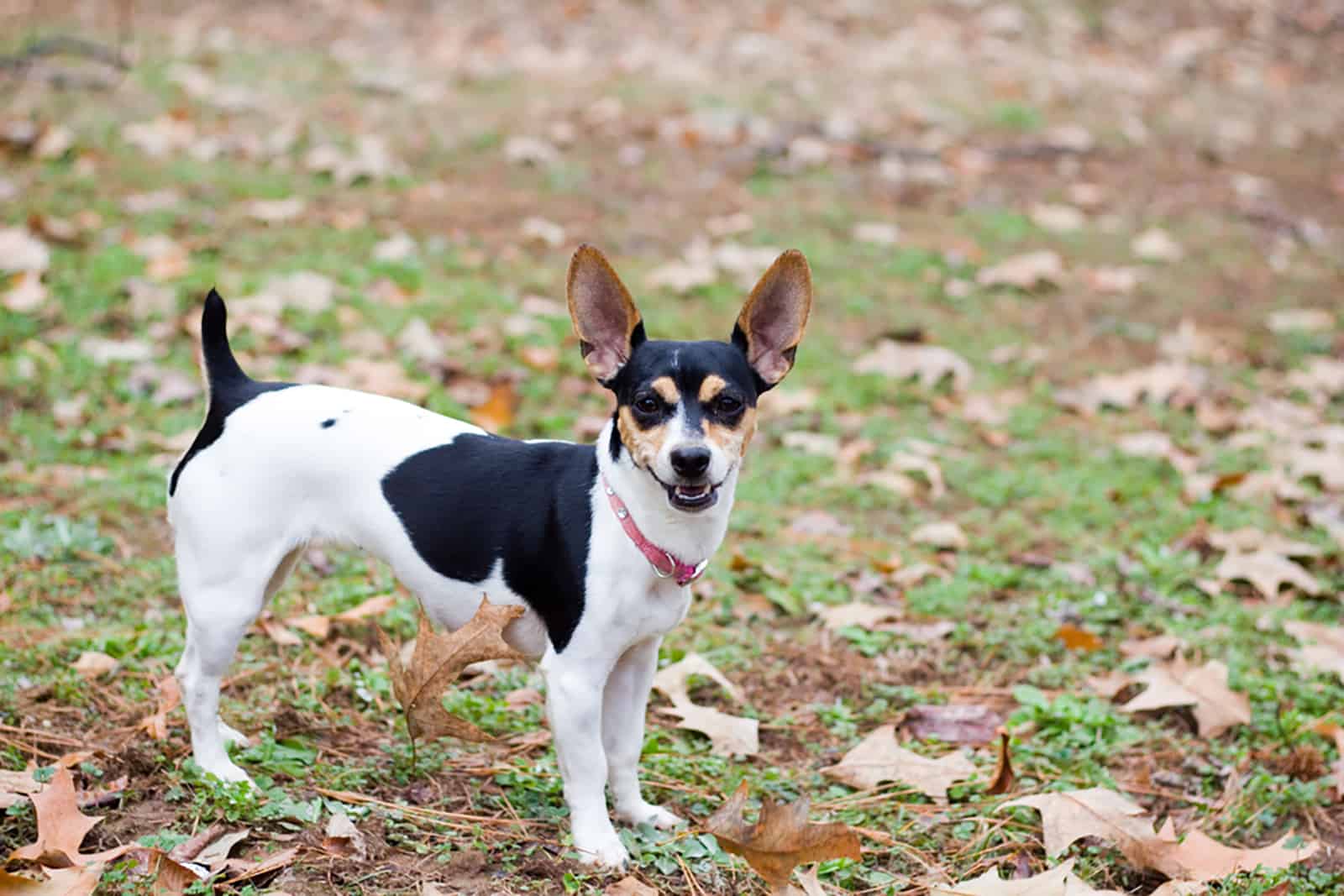
The breeding history of the Rat terrier is somewhat murky. The British brought a previous version of the Rat terrier, commonly called feists, to the US and simply kept breeding them for the same purpose of rat extermination.
The name was, allegedly, coined by Teddy Roosevelt himself.
Since they were indistinguishable from the feists, it is hard to define what dog breeds were mixed to get this result.
With their arrival in the United States, the Rat terrier was mixed with Italian greyhounds, beagles (they got the sable color from them) and Manchester terriers.
This gave them a color variety unlike any other breed and a short, shiny coat. A Jack Russell Terrier’s long coat is a terrier trademark, but the Ratter showed that you can be as tough and brawly as a Jack Russell with a short and smooth coat too.
Smooth fox terriers and whippets were also mixed with the Rat terrier but most of the features were already similar so the improvement was more from a health point of view.
If you are a Chihuahua lover, then sit down and take a deep breath because there is a Ratchi (Rat terrier x Chihuahua mix).
Small Speedsters
Though this is a small to medium dog, there is a toy version of Rattie. Those are achieved by breeding Toy fox terriers with miniature Rat terriers. That is definitely a small dog since it belongs to the toy-sized category.
Back to the Ratter… The standard Rat terrier grows up to thirteen or eighteen inches of height and can weigh anywhere between ten and twenty five pounds.
We already established that it has a short and smooth coat that does not have to be groomed too often.
The Rattie sheds in moderate amounts and it is not a big deal since the coat is not long. Their frame is athletic and they are very fast runners, reaching speeds of up to thirty five miles per hour.
Rats Beware
The Rat terrier breed is a vermin annihilator. Its size was perfect for farm jobs and the dirty work it included. Their prey drive was much preserved even in modern Rat terrier bloodlines and a Rat terrier puppy will show you how eager to hunt it is.
The breed is extremely energetic and you will need tall fencing around the yard. They are incredibly intelligent and training is a breeze.
Despite their size, they proved to be excellent watchdogs without the barking extravaganza you usually see with terriers.
They are adaptable and will live in both apartments and houses. They do like to run and jump so a large grassy surface would be ideal.
When it comes to socialization, they are friendly to strangers, love to play and will be extraordinary with your children.
Other dogs or animals? I do not think that is a smart idea. The amount of energy and prey drive in a Rattie would probably be too much for smaller pets and bigger dogs would have a tough time too. This is a small ruffian!
General Health And Lifespan
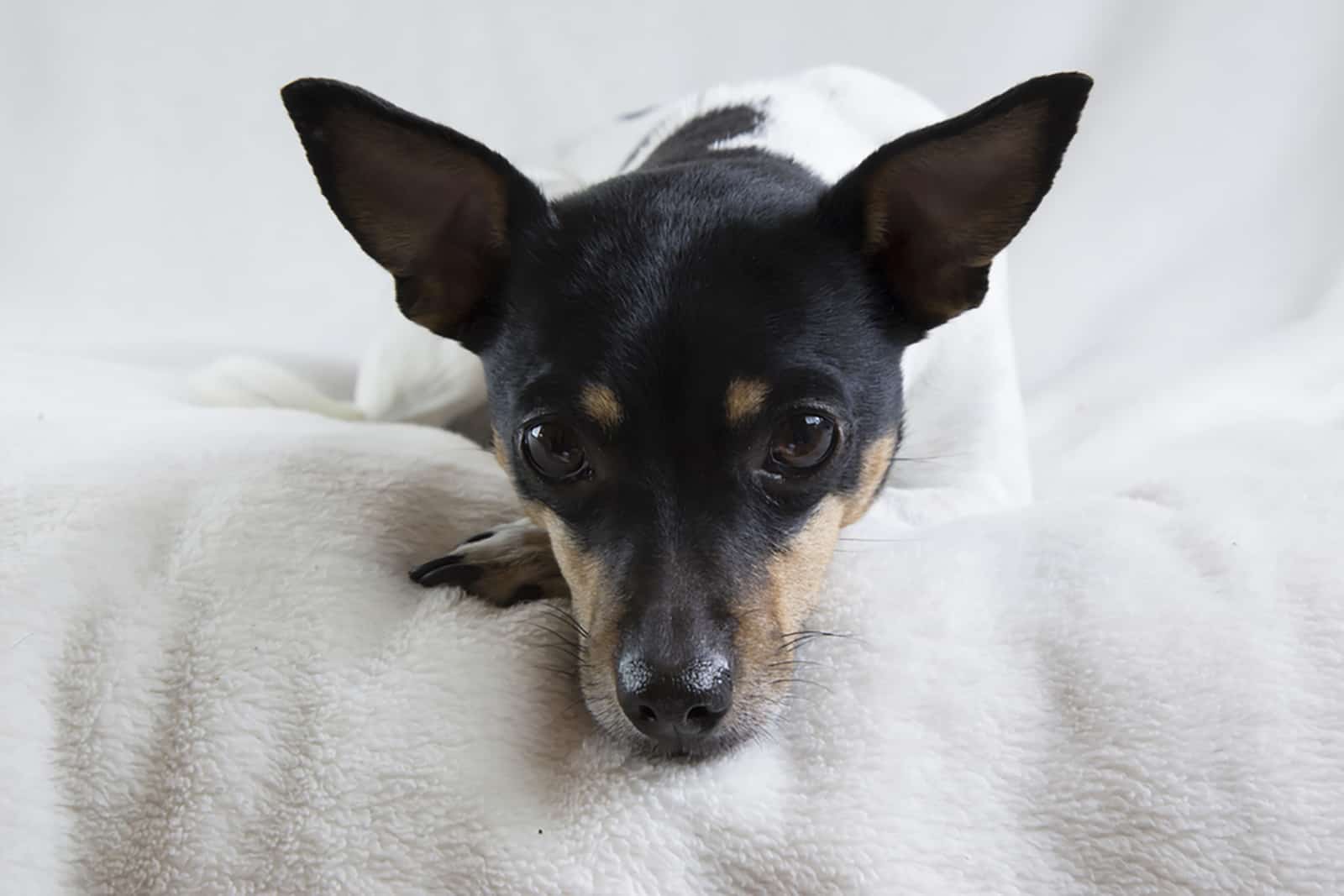
Ratters have generally good health but still can have conditions that affect small to medium sized dogs. Those can be hip dysplasia, patellar luxation, Legg-Calve-Perthes and heart and eye abnormalities.
With that good of a health bill, no wonder they live up to eighteen years of age. That is almost a third of a human life. Finding another breed with this kind of lifespan is extremely hard and owning a Ratter is certainly a privilege.
Closing Remarks
Colors look great on this small athletic exterminator. There are so many colors and the breed is still not overbred so, chances are, you will probably have fewer breeder options to choose from, but they will probably be higher quality on average.
If you want to get yourself a long lived dog, the Rat terrier color might have an impact if you are going for the merle or double parent recessive gene color combination.
However, the genetics are strong with the Rattie and you will, no doubt, enjoy its company.
So long, reader.
Read Next:
• 40 Rat Terrier Mixes You Never Thought Were Real
• The 7 Best Rat Terrier Breeders In The U.S.
